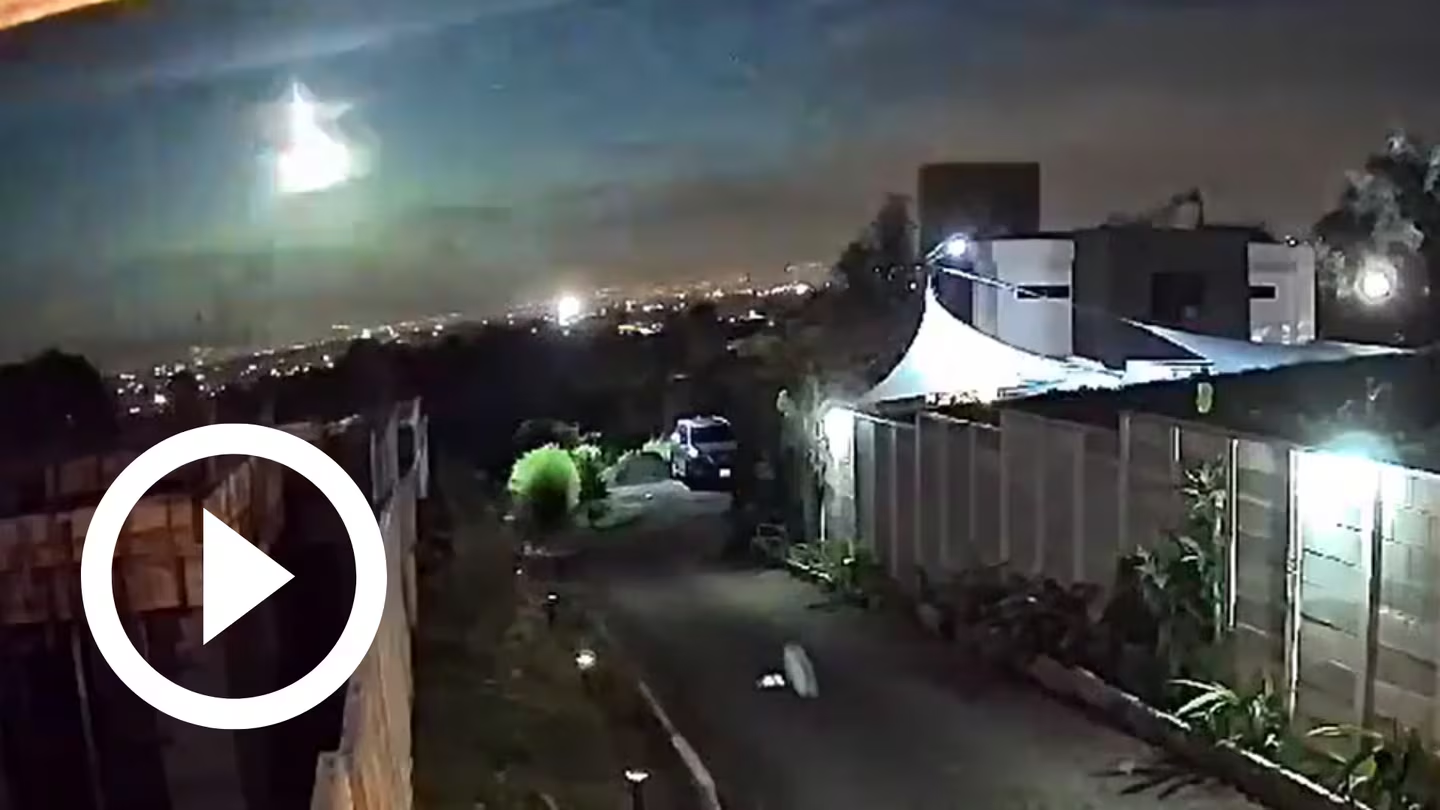Tuesday night, at precisely 8:23 PM, the skies over Costa Rica were briefly lit by an astronomical spectacle that captivated onlookers and scientists alike. A meteorite, tearing through the night sky, offered a brilliant show of lights, especially visible from the vantage points of several of the country’s famed volcanoes. The event was notably captured by the vigilant cameras of the Costa Rican Volcanological and Seismological Observatory (OVSICORI), stationed at Turrialba, Poás, and Rincón de la Vieja volcanoes.
Celestial Drama Over Turrialba
The volcano Turrialba, known for its majestic presence and active geological life, turned into a natural observatory that evening. The cameras installed there managed to record the entire sequence of the meteor streaking across the sky—a serendipitous event that offered both a stunning visual and valuable data for meteorological enthusiasts and researchers.
Unlike Turrialba, the cameras on Poás and Rincón de la Vieja only caught a glimpse of the meteorite’s flare—a fleeting but fiery burst that punctuated the darkness with its ephemeral glow. This variance in visibility from different locations provided a unique, multi-perspective view of the meteorite’s journey across the sky.

Expert Insights on the Celestial Visitor
Erick Sánchez, an expert from the Planetarium at the University of Costa Rica in San José, confirmed the sighting as a meteor. The unexpected visitor was not just a treat for the eyes but also a topic of excitement in the scientific community, sparking discussions and studies about its origin and trajectory.
Social media platforms buzzed with activity as videos circulated showing the meteor’s brilliant trail. Users from various locations, including La Sabana in San José, Santo Domingo de Heredia, and even as far afield as the province of Guanacaste, shared their experiences and footage of the event. The shared clips contributed to a collective narrative of a night when the universe decided to put on a spectacular show.
The Science Behind the Scenery
Meteors, commonly known as shooting stars, are bits of interplanetary material falling through Earth’s atmosphere and burning brightly in the process. The friction with the atmosphere heats the rock, causing it to glow and, in more dramatic cases, explode as a fireball, just as it did over Costa Rica. Events like these, while not uncommon globally, are special occurrences that provide not just awe-inspiring moments for sky gazers but invaluable moments for scientific observation and study.
A National Observatory’s Role
The role of OVSICORI in capturing and studying events like these is crucial. Equipped with high-tech cameras and monitoring equipment stationed at strategic points around the country, particularly around active geological sites like volcanoes, OVSICORI provides not only safety monitoring but also valuable data for the global scientific community. The observatory’s work helps to piece together the dynamic and often unpredictable behaviors of both Earth and space phenomena.
Reflecting on a Night to Remember
The meteor sighting from Volcán Turrialba serves as a vivid reminder of our planet’s place in the universe—a small globe within an immense cosmos, where events happen that are beyond human control but within our capability to observe and learn from. For the residents and scientists in Costa Rica, it was an evening that underscored the beauty and mystery of our celestial surroundings.
For astronomy enthusiasts and the public alike, these events stir the imagination and fuel interest in the sciences, leading to more eyes on the skies and, hopefully, a greater understanding of our wondrous universe.
Source link
admin



